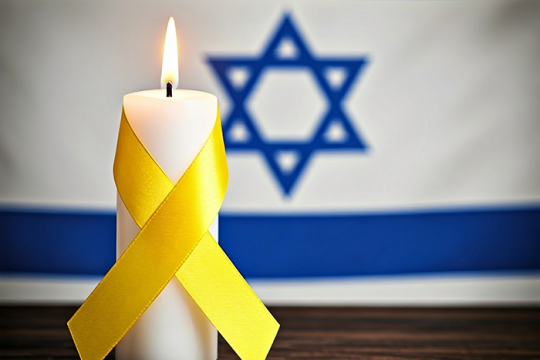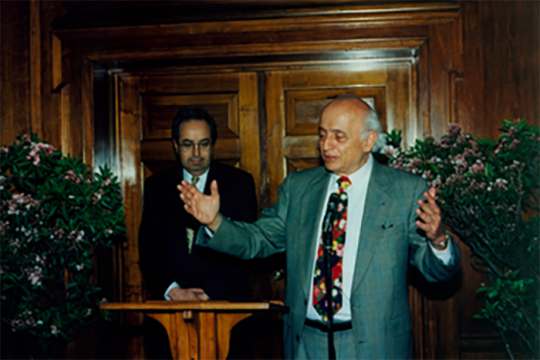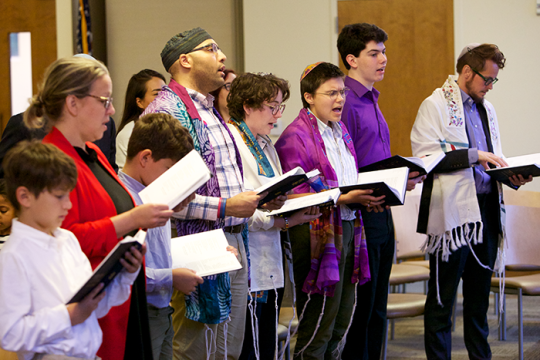Marilyn Suzanne Miller (PAFTY '67) describes her time in NFTY with an incredible sense of pride: “We were the center of the baby boomers – we came from the guitar playing at services – the Peter, Paul, and Mary graduates.” It’s no surprise that many of the peers she mentioned have since found themselves active, activists even, in the movement. It was the norm during this era in NFTY to arrive at a conclave and hear about a friend’s brother who was on his way to Selma, AL to march in the street. Her peers are the rabbis, writers, and leaders of the movement because, as she describes it, this was a time when NFTY “taught you to be assertively Jewish – to like, to be proud, to LOVE that you were Jewish.”
After attending the University of Michigan, Marilyn set out into the world of show business. With a start writing on the Mary Tyler Moore show, she began to learn the industry working on several other shows. Then she got the call from Lorne Michaels asking her to join the writing staff of a new show he was starting: Saturday Night Live. Marilyn remembers working in TV at a time when “the Jewish girl was considered the less pretty girl.” A time when there was no Jewish culture in the United States’ vernacular and the stereotype around Jewish women was to be the sidekick’s sidekick. “Gilda (Radner) and I were intent on that not being the case.”
It wasn’t all laughs for this Saturday Night Live writer. In NFTY, “we were the politicized but aggressively Jewish group… It was difficult to put your eyes only on Jewish issues.” Society was changing all around them, and now in a new industry, Miller had the opportunity to put a new vision on the screens, and into the homes, of the American public. It was the “same kind of social movement that we were a part of in NFTY that we applied to changing stereotypes. Here we are on the air! Judaism did not happen on TV. We were assertively Jewish in ways that I am very proud of.”
With a strong Jewish presence on the writing and acting staff, SNL never shied away from featuring Jewish culture, often using character traits of family members and friends as the basis of characters and sketches. Hanukkah was featured right next to Christmas in the first seasons, the Royal Delux II commercial parody even showcased a mohel.
On and off the air, Miller found a place for her Jewish identity. One Passover during the early years of SNL, Miller remembers everyone was still in the studio hard at work. There was no time for everyone to head back to their families for Seder so she suggested they host their own Seder. Pulling together Maxwell House haggadot, orders from several different delis, and all of the Jewish cast and crew hanging out on the studio floor, they held a Seder. Paul Shaffer took the lead and Lorne Michaels even had matchbooks printed up for the occasion: Paul Shaffer’s Celebrity Seder!
[[{"type":"media","view_mode":"media_large","fid":"62286","attributes":{"class":"media-image alignright","typeof":"foaf:Image","style":"","width":"100","height":"100","alt":""}}]]Miller left the SNL writing team after a few years and pursued other projects, but as many do, she returned in later years, finding a new SNL community to call family. Her writing success led to many awards and even an invitation to write the Clintons’ sketch for the White House Correspondents’ Association Dinner with Al Franken.
Miller’s strong Jewish identity started with her Sephardic family and a small synagogue outside of Pittsburgh, but it was through PAFTY weekends and weeks at NFTY institutes at Kutz Camp that her drive and assertive Judaism took hold – and that is something she is proud of to this day.
Related Posts
Image:

Marking this Moment: Resources for the Release of the Hostages
May these prayers and rituals guide us through this emotional time and foster a sense of community and compassion.
Image:

The Words and Wisdom of Rabbi Alexander M. Schindler, z”l, Commemorating his 25th Yahrzeit
In honor of the 25th yahrzeit of Rabbi Alexander M. Schindler, we have crafted this special Shabbat service supplement filled with his words and teachings to lift the spirit of worship and reflection.
Image:

Collaboration and Connection Power Small Congregations
The URJ serves 501 small congregations of 250 or fewer households throughout North America. Though small, these communities are vital to the North American Reform Movement. Whether merging with congregations from other movements or deepening sacred partnerships, these communities show that size does